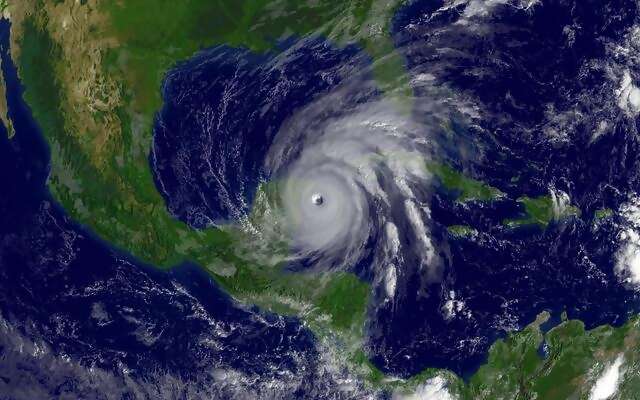If you plan to travel during hurricane season (which lasts from June 1st to November 30th) it is important that you understand some details about these violent storms. Read below to learn some key facts and common terminology.
What Are Hurricanes:
Hurricanes are violent tropical storms with sustained winds of at least 74 mph. They form over warm ocean waters – usually starting as storms. As they drift slowly westward, they are fueled by the warm waters of the tropics. Warm, moist air moves toward the center of the storm and spirals upward. This releases torrential rains. As updrafts suck up more water vapor, it triggers a cycle of strengthening that can be stopped only when contact is made with land or cooler water.
Hurricane Terminology:
-
Tropical Depression: an organized system of clouds and thunderstorms with a defined circulation and maximum sustained winds of 38 mph (33 knots) or less.
-
Tropical Storm: an organized system of strong thunderstorms with a defined circulation and maximum sustained winds of 39 to 73 mph (34-63 knots).
-
Eye: center a a hurricane with light winds and partly cloudy to clear skies. The eye is usually around 20 miles in diameter, but can range between 5 and 60 miles.
-
Eye Wall: location within a hurricane where the most damaging winds and intense rainfall are found.
-
Severe Thunderstorm: a thunderstorm with winds 58 mph or faster or hailstones three-quarters of an inch or larger in diameter.
Hurricane Warnings:
-
Tropical Storm Watch: An announcement that tropical storm conditions (sustained winds of 39 to 73 mph) are possible within the specified coastal area within 48 hours.
-
Tropical Storm Warning: An announcement that tropical storm conditions (sustained winds of 39 to 73 mph) are expected somewhere within the specified coastal area within 36 hours.
-
Hurricane Watch: An announcement that hurricane conditions (sustained winds of 74 mph or higher) are possible within the specified coastal area. Because hurricane preparedness activities become difficult once winds reach tropical storm force, the hurricane watch is issued 48 hours in advance of the anticipated onset of tropical-storm-force winds.
-
Hurricane Warning: An announcement that hurricane conditions (sustained winds of 74 mph or higher) are expected somewhere within the specified coastal area. Because hurricane preparedness activities become difficult once winds reach tropical storm force, the hurricane warning is issued 36 hours in advance of the anticipated onset of tropical-storm-force winds.
Hurricane Scale:
-
Category I - 74-95 mph winds with 4-5 ft. storm surge and minimal damage
-
Category II - 96-110 mph winds with 6-8 ft. storm surge and moderate damage
-
Category III - 111-130 mph winds with 9-12 ft. storm surge and major damage
-
Category IV - 131-155 mph winds with 13-18 ft. storm surge and severe damage
-
Category V - 155+ mph winds with 18+ ft. storm surge and catastropic damage
 |
 |
|
Stuck in a Hotel During a Hurricane? Here's What to Do! It is not a fun experience to be stuck in a hurricane no matter where you are. But when you are away from home, in an unfamiliar area it can be that much more chaotic. The best thing you can do is be as prepared as possible. Read More. |
Hurricane-proof Your Next Trip As hurricane season quickly approaches it is good to be aware of your insurance options. A Hurricane Guarantee Policy is a type of insurance offered to travellers by some hotels and airlines. Read More. |




